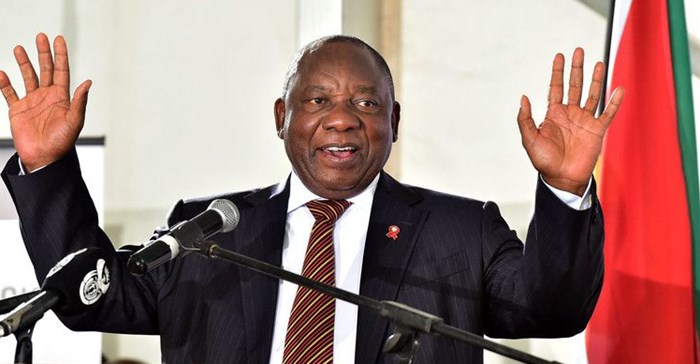#BizFinFocus: Wishlist for #SONA2018

There are great expectations that the speech will plot the course for an improvement in economic growth during 2018 under the new administration. The newly elected president has alluded to his plans by saying in late 2017 that South Africa “must act now – boldly, decisively and collectively – to change the trajectory of our economy”. One of his immediate priorities is to restore confidence among local and foreign investors. Promising a “New Deal for South Africa”, he is aiming for economic growth to rise to 5% (a level last seen a decade ago) by 2023.
Markets reacting positively
The rand exchange rate – which has been increasingly sensitive to domestic political developments over the past few years – welcomed Ramaphosa’s election and forthright words. The South African currency appreciated from R13.70/$ in mid-December 2017 to below R12/$ during the early part of February. A firmer rand improves the outlook for South African consumers through lowering the cost of imports and associated inflation. Indeed, the South African Reserve Bank (Sarb) was able to lower its inflation forecasts during January in part due to a stronger rand.
South Africa’s 10-year bond yield declined from 9.3% in mid-December 2017 to 8.3% during the last week of January 2018. Bond traders had since the Medium-Term Budget Policy Statement (MTBPS) been pricing in further downgrades in South Africa’s local bond ratings that would result in it being excluded from the Citi World Global Aggregate Bond Index (WGBI). This could result in more than R100bn in foreign money exiting the domestic capital market. However, the decline in bond yields since Ramaphosa’s election as ANC leader indicated that investors were expecting him to at least stem the downward trajectory in sovereign ratings.
In order to further boost confidence and reignite economic growth, Ramaphosa will have to be decisive in the Sona in setting out his economic plans for the next year. PwC economists would like to see the following economic issues addressed in his speech:
- Radical economic transformation has been part of South Africa’s economic policy discourse for the past two years. Ramaphosa has also committed himself to accelerate the transfer of ownership and control of the economy to black South Africans towards supporting economic development and a decline in income inequality. However, the strategies behind this economic transformation remains opaque: Investor confidence will depend on having more information on how the economy would be transformed.
- Empirical research shows that education is the biggest contributor to poverty alleviation in developing countries by increasing the employability of labour. In South Africa, the unemployment rate of people with a tertiary qualification is less than half of that for adults with only primary education. This makes the funding of tertiary education not only a fiscal matter, but one of much greater influence on the South African economy. Students and tertiary institutions need more clarity over the phasing in of subsidised higher education over the next few years.
- Ramaphosa’s “New Deal” is planning for the creation of one million jobs over the next five years, with the manufacturing sector set to take the lead. The approach is fitting to South Africa’s challenges: history has shown that factory employment played a very important part in economic development in countries that have seen periods of high and sustained economic growth since the end of World War II. The president should elaborate on his plans for incentives – e.g. the creation of special economic zones (SEZs) – aimed at boosting the factory sector.
- Restoring state-owned enterprises (SOEs) as drivers of economic growth and social development is a key commitment set out in a 10-point action plan he revealed in November 2017. The importance of energy security and transport efficiency to revitalising economic growth in the country cannot be underestimated, with SOEs playing a significant role in these sectors. Financially sound SOEs will reduce pressure on the fiscus and support economic growth going forward. The Sona should reflect on progress made so far and further efforts.
- Investment in the mining industry – one of the largest job creators and export earners in the country – was hamstrung last year by policy uncertainty in the sector. The Chamber of Mines commented earlier this month at the Mining Indaba that it expects mining investment to rise this year if the Ramaphosa administration is able to offer more regulatory certainty. For this to happen, the stalemate between the government and mining industry over the charter needs to be resolved.
- Apart from drought conditions weighing on crop production, the farming industry (and rural areas in general) are also experiencing regulatory uncertainty which is hampering the normal functioning of the agricultural sector. There is concern about property rights – a key requirement for long-term economic development – in the sector after Ramaphosa indicated in December 2017 that he is in favour of expropriation of land without compensation, while at the same time indicating that this land reform must be done without undermining agricultural production and food security. His address should elaborate on this.
By addressing these issues, Ramaphosa will maintain the momentum that he has been able to build since mid-December. He needs to expand on his comment at the World Economic Forum (WEF) 2018 in Davos that “[t]he wheels of change are moving now and they are going to start speeding up”.
The outlook for the South African economy has improved with Ramaphosa’s ascent to first the party leadership and now the leader of the national government. There is great anticipation that his “New Deal” will result in a collection of necessary reforms being made to the local economic space, including confidence-building solutions to economic policy uncertainty in areas such as mining and agriculture. It is believed that economic growth will improve over the coming 12 months on the back of these changes.


















